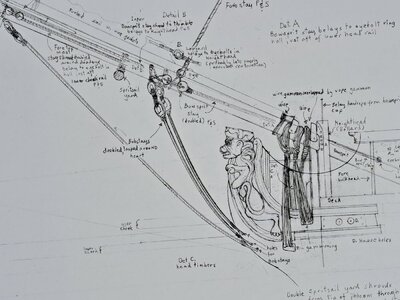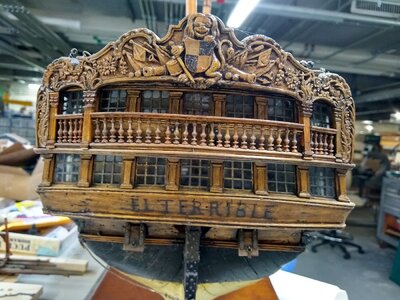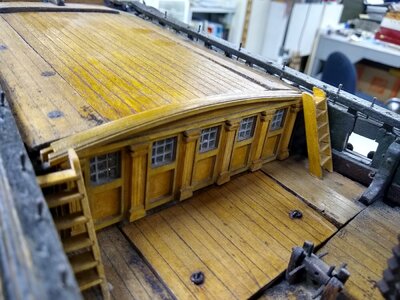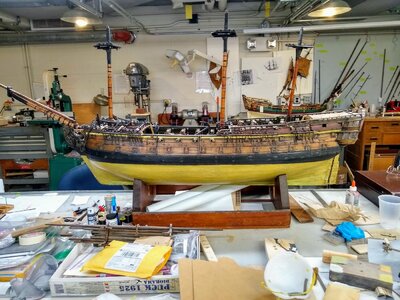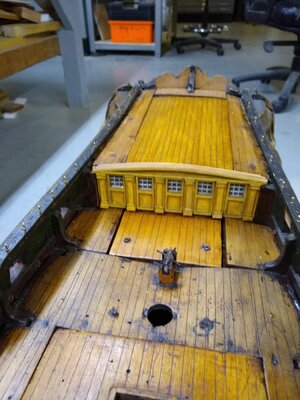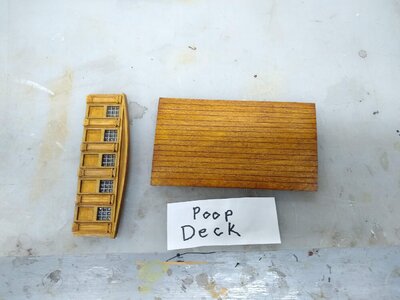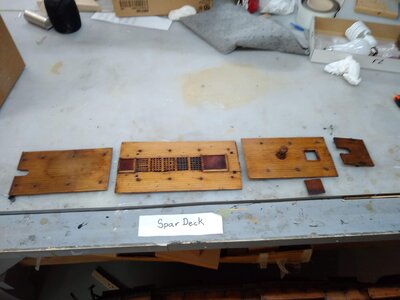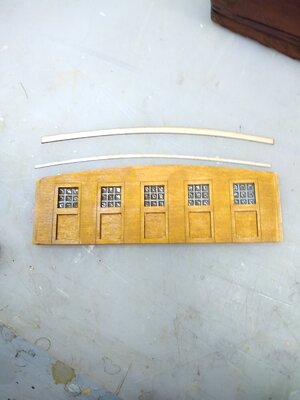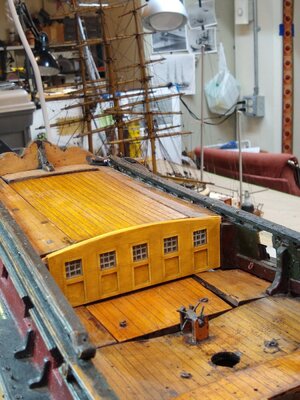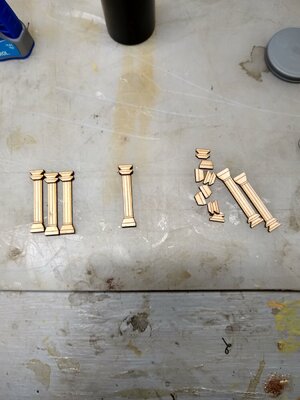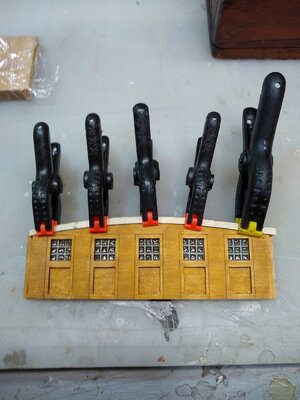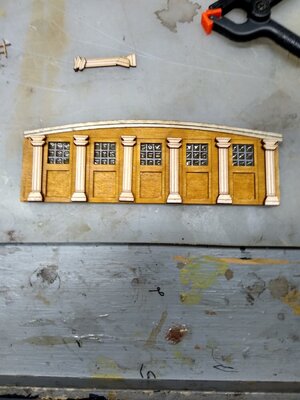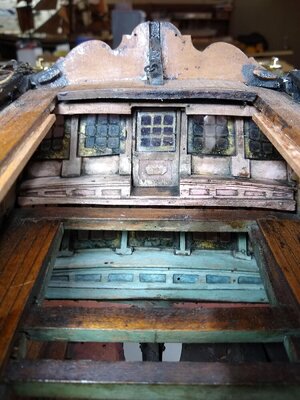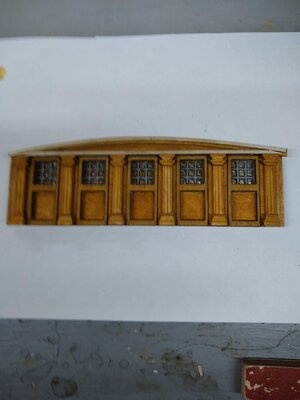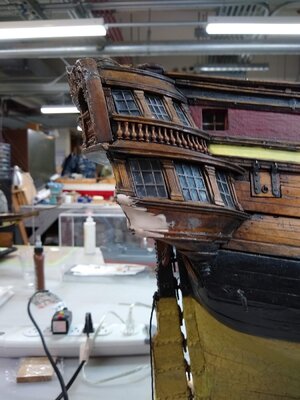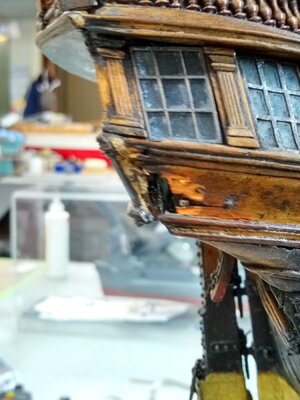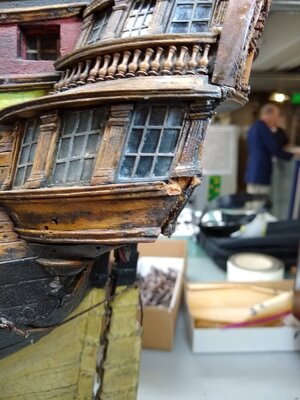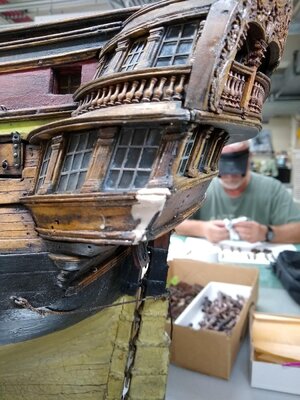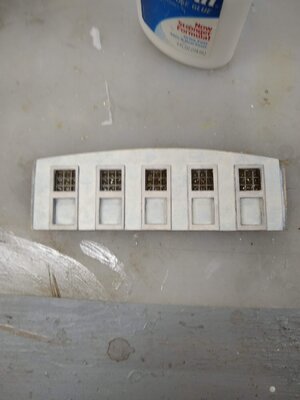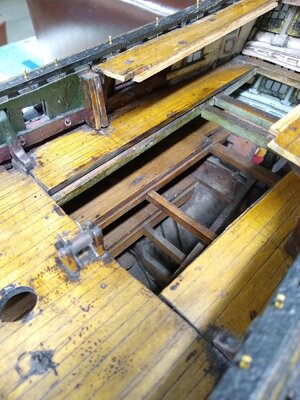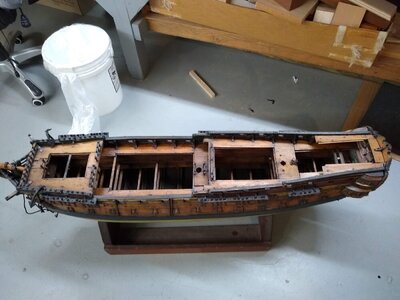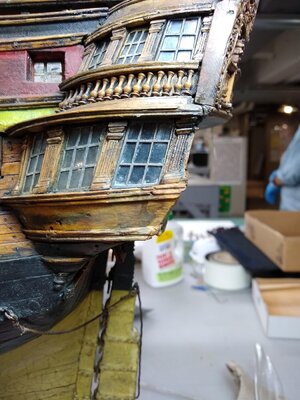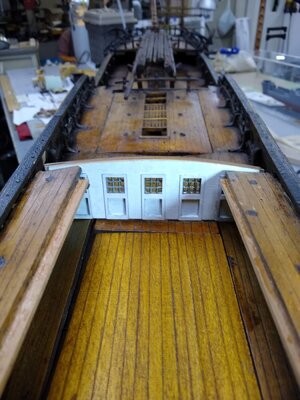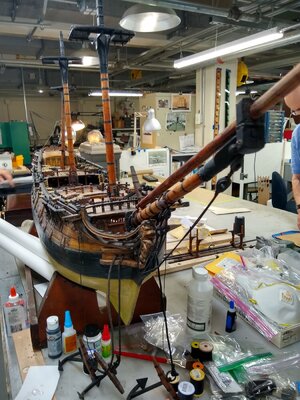A variety of artists bushes for dusting, Cotton swabs and makeup applicators from the drugstore for cleaning. The secret sauce for cleaning used to be enzyme solution (AKA spit), since replaced with Trewax brand floor wax stripper, which is water soluble, so the strength of it is infinitely variable, to be made as gentle in its effectiveness as desired. I stumbled across its use purely by serendipity years ago.. It cleans, dissolves and amalgamates old shellac finishes without removing the patina ,crackle. color or desired qualities depending on how much you dilute it with water, while still removing the blackened oxidized top layers and dirt ,bit by bit. It has now been adopted by Don Preul, Curator of models at the USNA, as the preferred method for cleaning. I know it doesn't sound very scientific, but it works with no discernable ill effects noted after many years of being employed in this use. Who knew? Only this single brand of cleaner (to my knowledge) works this way. I bought the work shop a lifetime supply. Since it can be so diluted only a half dozen bottles will last for years.
The worm eaten wood damage and rot can be stabilized and hardened with PC-Petrifier brand Wood Hardener. (Water soluble acrylic, DON'T use the solvent based stuff!!!) It soaks right into dry rotted wood and dries over night creating a stable base for wood fillers or putties. I used two part epoxy putty( Comes in a roll in various colors, needed together and modeled like clay ) available on line or at the hardware store. Work time varies, slower is better. Elmer's brand carpenter's water soluble wood putty works very well ,is infinitely workable, and sandable with the virtue of being easily reversable. For coloring I have used Behlen powders mixed with thinned blond shellac , or acrylic water soluble varnish. Even Acrylic artist colors and mediums will serve nicely, are very stable and light fast. Oil artist colors work, are reversable, but are toxic and take forever to dry. In fact, stay away from solvent based stuff altogether (alcohol not as bad). It is toxic and unnecessary in lieu of environmentally friendly and non toxic alternatives.
My techniques and training were acquired on the job, experimentally and through personal study (like asking experts and research and through experience). My work at the Academy all took place under the scrutinizing eyeballs of Don Preul, Curator of Models, and Grant Walker, director of Education at the Academy Museum as well the watchful eyes of a highly experienced crew of long time volunteer model shipwrights.

